(DNV) In a time of regulatory uncertainty and evolving fuel options, shipowners like Great Eastern Shipping are taking a pragmatic route to decarbonization by focusing on flexible fleet upgrades and operational efficiencies while supporting Indian ports and government construction of a
Montana Renewables Launches MaxSAF™ Blended, Advancing Sustainable Aviation Fuel
(Calumet/PR Newswire) Montana Renewables (MRL), in collaboration with Calumet Montana Refining (CMR), has commissioned onsite blending and shipping facilities to offer a nominal 50/50 blend of renewable and fossil jet fuel certified under ASTM D7566 and ASTM D1655 specifications.
This finished product is drop-in compatible with all existing systems and will initially be distributed through AEG Fuels' network to select aviation hubs in Montana, Washington, and Oregon.

Pictured from left to right: Jason Pence, Calumet Assistant Superinteendent;
Levi Lee, Calumet Loader; Jacob Miller, Calumet Loader; Glade Westood,
Dixon Senior Corporate Safety Director; and Kolton Messerly, Dixon Truck Driver.
"AEG Fuels is honored to collaborate with Montana Renewables on this landmark SAF inaugural blend," said Landon Larson, Vice President, Supply NA at AEG Fuels. "Together, we're demonstrating how strategic partnerships can accelerate the transition to sustainable aviation and deliver real value to operators across our fueling network."
Why It Matters
- For Montana Renewables: MaxSAF™ sales from the truck rack allows local / regional service and opens the sustainable aviation market outside of major airports.
- For Customers: A drop-in fuel solution that helps meet ESG goals, reduce Scope 1 and 3 emissions, and enhance brand leadership.
- For the Environment: SAF reduces lifecycle greenhouse gas emissions, improves air quality compared to traditional Jet A, and supports a circular economy – farm to fuel.
About Montana Renewables
Montana Renewables (MRL) is a leading renewable fuel company located in Great Falls, Montana. We produce Sustainable Aviation Fuel (SAF), Renewable Diesel, Renewable Hydrogen, and Renewable Naphtha. As one of only three SAF producers running at commercial scale in North America, we meet the increasing demand for sustainable fuels. As a Great Falls business leader, MRL offers high-paying jobs and career opportunities while supporting the local economy and contributing to the community's overall well-being. Pacific Northwest farm and ranch operations ultimately provide MRL with sustainable, renewable, low-carbon feedstocks and agricultural byproducts including tallow, distillers corn oil, canola oil, used cooking oil and camelina oil. These are converted to renewable transportation fuels which have lower emissions compared to conventional fossil fuels. MRL is an unrestricted subsidiary of Calumet, Inc.
About Calumet
Calumet, Inc. (NASDAQ: CLMT) manufactures, formulates, and markets a diversified slate of specialty branded products and renewable fuels to customers across a broad range of consumer-facing and industrial markets. Calumet is headquartered in Indianapolis, Indiana and operates twelve facilities throughout North America. READ MORE
Analysis: Shipping Climate Plan Delay Could Sink Clean Fuel Projects
by Angeli Mehta ( Ethical Corporation Magazine/Reuters) Vote to delay agreed IMO climate plan means 100 ammonia and methanol projects now uncertain; Shipping GHG emissions could rise 50% by 2050 without action; IMO plan was expected to raise $11-12 billion annually for small island states; The EU's FuelEU Maritime regulation sets decreasing greenhouse gas limits for ships calling at EU ports
As the Trump administration dismantles climate action at home, it has demonstrated that it’s also prepared to try to derail global attempts to cut emissions.
There had been widespread optimism that members of the International Maritime Organisation (IMO) would sign off on an agreement for a global fuel standard and a global price on shipping emissions, which had been thrashed out in April.
But sustained U.S. threats of retaliatory measures, including sanctions, visa restrictions and commercial penalties, against nations supporting the proposed Net Zero Framework led to a vote to delay the decision for a year.
There is an urgency to decarbonise shipping: the industry uses dirty fuels and accounts for 3% of global emissions today, but that could rise by as much as 50% by 2050 without industry action. The challenge is exacerbated as political tensions force ships to reroute.
The IMO’s Net-Zero Framework, which has been years in the making, is intended to progressively lower permitted greenhouse gas emission intensity levels, so incentivising international shipping to switch to cleaner fuels, and adopt efficiency measures, such as speed optimisation or weather routings.
Rather than a flat levy on emissions (as many had advocated), the framework involves a ratcheting of fees for vessels that miss targets and rewards for those that adopt cleaner fuels.
...
Various analyses suggest the deal, which would have come into force in 2028 had it been ratified, would lead to a 10% reduction in emissions on 2008 levels by 2030, compared with the IMO’s target of “at least 20% – striving for 30%”.
In a statement following the collapse, the Maersk Mc-Kinney Moller Center for Zero Carbon Shipping said “The case for a global framework is stronger than ever”, and urged member states to use the year to advance the guidelines for action.
...
The IMO delay has ripple effects throughout supply chains, as shipping is a potentially important off taker for green hydrogen-based fuels, with its demand helping to scale the hydrogen industry and cut costs.
Another shipping fuel is green ammonia, which also requires hydrogen to manufacture, and which could be boosted by global efforts to increase demand for low-carbon fertilisers.
The Mission Possible Partnership has been tracking announced projects for clean ammonia and methanol production. Its chief executive, Faustine Delasalle, says: “As more and more companies realised that the IMO regulations could very well be passed this October, it precipitated action on the project pipeline, and that's where, obviously, we'll have an impact in the coming months.”
Around 100 new ammonia and methanol projects have been announced since the summer, although the tracker doesn’t break down what they’ll be used for. However, Delasalle anticipates that the IMO delay will likely have an impact on financial sign-off on some projects this year.
For now, the only regulations in place to push the industry towards cleaner fuels are the EU’s emissions trading system, which expanded to embrace shipping last year, and the FuelEU Maritime Regulation. The UK’s ETS will be extended to include shipping in 2026.
...
But the EU regulation also stimulates LNG and biofuel, accelerating the risk of technology lock-in, suggests Smith of UCL.
Another important element of the decarbonisation agenda is energy efficiency.
...
With uncertainty surrounding the IMO framework, Jesse Fahnestock, director of decarbonisation at the Global Maritime Forum, suggests government subsidies are needed to help accelerate investments, including some “creative thinking” on ways to repurpose existing funding.
For example, Norway has begun to allocate a proportion of existing subsidies for hydrogen production projects aimed at the maritime sector, and announced it will do the same for ammonia.
...
Small island states are also affected by the delay, as the money raised from the IMO Net-Zero Framework fees is intended for a fund to support a just transition, including compensating developing nations for impacts such as the increased price of food because of higher shipping costs and to support early adoption of near-zero fuels. READ MORE
COP30 and the Acceleration of Renewable Energy and Sustainable Fuels
by Jefferson dos Santos Estevo* (Advanced Biofuels USA) The United Nations Climate Change Conference (COP30) will be held in Belém, Pará, from November 10 to 21, 2025, under the presidency of Ambassador André Corrêa do Lago. In early March 2025, the “First Presidency Letter” was issued, providing political guidance to signal thematic priorities, structure negotiations, and orient the event’s political agenda. On June 20, the Fourth Letter introduced the topic of energy transition, our subject of interest.
The Global Stocktake (GST) is the mechanism under the Paris Agreement that assesses collective progress every five years toward limiting global warming to 1.5°C. COP30 structured its Action Agenda around six thematic pillars, guiding policies and commitments to fully implement this climate goal, the first of which is the “transition in the energy, industry, and transport sectors.”
The energy transition occupies a central position, not only as an environmental objective but also as a strategic driver of a new development model, an area of high interest for the Brazilian government.
Within this pillar, the presidency established four fundamental objectives:
(1) triple renewable capacity and double energy efficiency;
(2) accelerate zero- and low-emission technologies in hard-to-decarbonize sectors;
(3) ensure universal access to energy; and
(4) transition away from fossil fuels in a just, orderly, and equitable manner.
These actions and targets are in direct continuity with the so-called United Arab Emirates (UAE) Consensus, established at COP28 in Dubai in 2023, when 198 Parties adopted the first negotiated text explicitly mentioning the need to “transition away from fossil fuels” while also tripling global renewable capacity and doubling energy efficiency by 2030.
At COP29 in Baku, Azerbaijan, energy transition was on the agenda with new targets, but much of the discussion will take place at COP30, a period for submitting new Nationally Determined Contributions (NDCs) and updating the next five-year cycle of the Paris Agreement.
Within the UAE Consensus framework, the International Renewable Energy Agency (IRENA) was designated to monitor and report global progress on the two central targets: expansion of renewable capacity and doubling energy efficiency. In 2024, IRENA published the report Delivering on the UAE Consensus, noting that installed renewable energy capacity reached 3.9 TWh in 2023, with a new addition of 473 GW, highlighting solar photovoltaic with 346.9 GW. Bioenergy, including biofuels (ethanol, biodiesel, SAF), reached around 149 GW in 2023.
A new report released in October 2025 indicated that installed renewable capacity increased by an additional 582 GW in 2024, representing an annual growth of approximately 15%, the highest ever recorded, reaching a total of 4.443 TW, with solar photovoltaic again accounting for over 70% of this increase. Bioenergy capacity grew to 151 GW, still far below the 2030 target of 308 GW. Some countries, including Japan, Poland, and Brazil, have modified their biofuel mandates.
Despite the increase in production, IRENA emphasizes that bioenergy production and use must scale exponentially, both for electricity generation and for supplying sustainable fuels, including biofuels, biogas, hydrogen, and hydrogen-derived fuels. These sources are essential to replace fossil fuels and reduce emissions in hard-to-decarbonize sectors such as steel, cement, chemicals, aviation, shipping, and heavy transport, which remain highly dependent on conventional energy sources. In 2024, investments in bioenergy increased by 45%, reaching approximately US$19 billion, representing significant progress, although still insufficient to meet global energy transition targets.
Figure 1: Global installed renewable power capacity in the 1.5°C Scenario, 2023, 2024 and 2030
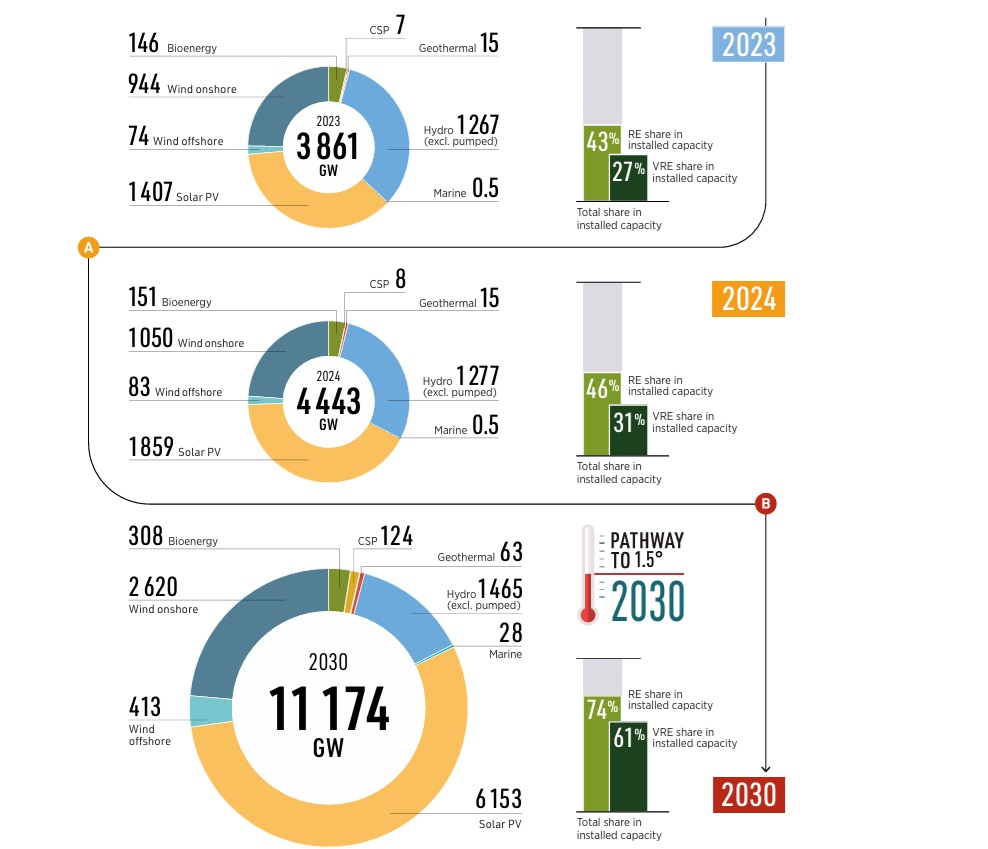
Search: (IRENA, 2025)
In this context, during the COP30 preparatory meeting, the Pre-COP, held in Brasília in October 2025, the Brazilian government announced the initiative “Belém Commitment on Sustainable Fuels”, also called “Belém 4x”, led in partnership with Japan, Italy, and India. The commitment aims to quadruple global production and use of sustainable fuels by 2035, based on evidence presented in another key report, the IEA’s Delivering Sustainable Fuels: Pathways to 2035.
The “Belém 4x” initiative reinforces the capacity of countries with significant renewable potential, such as Brazil, to play a leading role in reorganizing global clean energy supply chains. The IEA report projects that global sustainable fuel use will quadruple by 2035, rising from about 6 exajoules (EJ) in 2024 to over 25 EJ, driven primarily by advanced bioenergy, biogas, and low-carbon hydrogen, with a focus on sectors hardest to electrify. Achieving these targets requires substantial investments in production and distribution infrastructure, policy incentives, technological innovation, and international coordination.
Figure2: Sustainable fuel supply by fuel and demand by sector in the accelerated case, 2024 2035
%20cropped%20Jefferson.jpg)
The convergence of the targets to triple renewable energy, double energy efficiency, and quadruple sustainable fuel production establishes an unprecedented emissions mitigation tripod in the international climate regime.
This strategy goes beyond substituting energy sources, seeking to redefine the development paradigm itself, combining technological innovation, energy security, and climate justice. By placing energy transition at the center of climate policy, COP30 aims to link decarbonization with poverty reduction, productive inclusion, and economic diversification, especially in Global South countries. In this regard, the Brazilian presidency positions energy transition as a central agenda item for COP30 negotiations, although the specific negotiation tracks have not yet been detailed.
* Jefferson dos Santos Estevo is a researcher in International Relations and Energy Transition at the Center of Excellence in Hydrogen and Sustainable Energy Technologies (CEHTES) at the Federal University of Goiás. FAPEG Research Fellow. He holds a doctorate in Social Sciences from the University of Campinas.
Related articles
- PRE-COP: Brazil Pledges to Quadruple Production of Sustainable Fuels (COP30 Brasil)
- Sustainable Industries Letter to the COP30 Presidency (The Molecule Group)
- IRENA chief expects sustainable biofuels to feature as key COP30 theme (Reuters)
- How Trump Pressures the World Into Burning More Oil and Gas: As COP30 nears, the US’s pressure to keep fossil fuels relevant may empower petrostates, potentially giving them more leverage at the UN talks. (Bloomberg)
Excerpt from COP30 Brasil: Two major reports released at the Pre-COP will serve as the foundation for Brazil’s goal of quadrupling the use of sustainable fuels by 2035 and accelerating the global transition to renewable energy. --- The energy transition took center stage on the second and final day of the Pre-COP, held on Tuesday, October 14, in Brasilia. During the event, Brazil’s Ministry of Foreign Affairs launched the Belém Commitment for Sustainable Fuels—known as Belém 4x—an initiative aimed at building high-level political support for the global goal of quadrupling the production and use of sustainable fuels by 2035.
The target is supported by a groundbreaking report from the International Energy Agency (IEA), Delivering Sustainable Fuels – Pathways to 2035.
Belém 4x seeks to promote the worldwide adoption of clean energy sources—such as hydrogen and its derivatives, biogases, biofuels, and synthetic fuels—capable of replacing fossil fuels and contributing to the decarbonization of energy systems and the fight against climate change.
“This initiative seeks the support of as many countries as possible to send a political signal, including to economic stakeholders. Many of these technologies are technically viable but are not yet produced at sufficient scale,” noted João Marcos Paes Leme, Director of the Energy Department at Brazil’s Ministry of Foreign Affairs.
Japan, Italy, and India have already expressed support for the Brazilian initiative, and more countries are expected to join the international commitment during the COP30 Leaders’ Summit, scheduled for November 6–7 in Belém.
Focus on Renewable Energy
In addition to the IEA report on sustainable fuels, another key study was presented at the Pre-COP—this time focusing on renewable energy and energy efficiency. The report by the International Renewable Energy Agency (IRENA), submitted to the Global Renewables Alliance (GRA) and the COP30 Presidency, shows that although the world reached a record 582 GW of renewable energy capacity in 2024, an additional 1,122 GW per year will be required to meet the 2030 target.
The outlook for energy efficiency is even more concerning, having improved by just 1% in 2024—far short of the 4% annual increase needed. READ MORE
Excerpt from The Molecule Group: Sustainable IndustriesLetter to the COP30 Presidency
As industry leaders from across the sustainable fuels value chain, we encourage the Brazilian COP30 Presidency to drive international collaboration and commitments to increase the production and use of sustainable fuels,
Achieving net zero GHG-emissions will require low carbon fuels to meet approximately 20% of global final energy demand by 2050, which will necessitate a substantial increase in sustainable fuels across all sectors.[1]
Despite record growth, ready availability, and a track record of meaningful decarbonization, sustainable fuels production and use remains far short of their potential, and none of the main sustainable fuel options are on track for a net zero pathway.[2]
We recommend that countries consider the following principles when working to increase the production and use of sustainable fuels by 2035:
Adopt Ambitious Policies
-
Foster demand by establishing stable, long-term mandates that are technology-neutral and tailored to national circumstances.
-
Promote the greatest climate benefit by rewarding fuels based on their lifecycle greenhouse gas reductions and crediting net-negative emissions from activities including but not limited to carbon dioxide removal, avoided emissions, and climate-smart agricultural practices.
-
Encourage investment by providing predictable financial support, such as contracts for difference, loan guarantees, or funding for essential infrastructure.
-
Maintain accountability by integrating sustainable fuels into national climate and energy plans, including within UNFCCC Nationally Determined Contributions and annual National Inventory Reports.
Support Efficient Markets
-
Harmonize the use of carbon accounting in policy making between jurisdictions and across voluntary and compliance markets. Consider the inter-operability of lifecycle assessment models, the use of evidence-based modeling inputs, the treatment of biogenic and recycled carbon, and encouraging common lifecycle assessment systems boundaries.
-
Support market-based transactions and procurement frameworks that recognize the value of environmental attributes for fuels, chemicals, and materials as separate from the underlying commodity, and that are standardized across compliance and voluntary markets.
-
Recognize the relationship between fuels, chemicals, and materials by promoting the use of sustainable molecules across all applications, creating a level playing field in the use of feedstocks, and supporting the inter-operability of carbon accounting frameworks, market-based transactions, and certification schemes between sectors.
-
Strengthen sustainability certification schemes and simplify data requirements by improving their compatibility, consistency, and transparency.
-
Simplify regulations to support diverse feedstock options and the rapid up-scaling of sustainable fuel supply and distribution networks.
-
Advance global trade through inter-governmental cooperation, facilitating equitable access to sustainable fuels, standardizing market frameworks, and eliminating geographic and sectoral barriers.
Recognize All Environmental and Economic Benefits
-
Recognize the climate and non-climate benefits achievable throughout sustainable fuels supply chains, including energy security, economic growth in rural and developing regions, reductions in non-GHG air pollutants, improvements in water quality, beneficial land-use impacts, and the circularization of our economy - including through the implementation of climate-smart agricultural practices.
-
Capitalize on economic opportunities that are inherent in developing new sustainable fuels technologies and infrastructure, especially in emerging markets and rural economies, including by upskilling existing workforces and providing relevant education opportunities, realizing the potential for widespread and equitable benefit from the energy transition.
These Principles represents our collective intent to drive forward the global agenda for sustainable liquid and gaseous fuels, placing our climate commitments and broader environmental goals at the center, and working to ensure sustainable, just and equitable energy progress for all.
[1] International Energy Agency, Net Zero by 2050 – A Roadmap for the Global Energy Sector, p. 105-113
[2] International Energy Agency, Towards Common Criteria for Sustainable Fuels, p. 3 READ MORE
Excerpt from Reuters: Targets for sustainable biofuels use and social aspects of the energy transition will be in focus at this year's United Nations climate summit, COP30, said Francesco La Camera, Director-General at the International Renewable Energy Agency (IRENA).
COP30 will be held on November 10-21 in Belem, Brazil, where countries are due to present updated national climate commitments and assess progress on renewable energy targets agreed at previous summits.
La Camera said he anticipates a biofuel pledge that could become a target in the final declaration, potentially calling for quadrupled production by 2035 or setting a share target for sustainable aviation fuel in the energy mix.
"I think there will be more focus on the social aspect of the transition and also on the sustainable use of biomass," La Camera said on the sidelines of the Singapore International Energy Week event.
IRENA has prepared a biofuel report for the conference and launched an agreement with the International Civil Aviation Organization to promote biofuel manufacturing, he said.
La Camera said the conference will address how communities can participate in renewable energy projects. READ MORE
QUOTE OF THE WEEK -- Sreeraman Thiagarajan
In many ways, the race for green-energy supremacy is unlike any other. Here, anyone coming out on top only makes the world a better place. The country that finishes second is not a loser, but a trailing champion; inspiring the next wave of emerging nations to follow. It is perhaps the only net-positive game in modern economic history where all major economies can win together. -- Sreeraman Thiagarajan (Economic Times) READ MORE
Arcadia eFuels Signs Agreement with Hitachi Energy to Deliver Electrical Infrastructure for Vordingborg eSAF Facility
(Arcadia dFuels) Hitachi Energy and Arcadia eFuels have signed an agreement to provide the complete electrical infrastructure for Arcadia eFuels’ upcoming production facility in Vordingborg, Denmark. The plant, being one of the world’s first large scale eSAF facilities, will operate entirely
October 28, 2025 Read Full Article
BBVA Joins Iberia Initiative to Reduce the Carbon Footprint of Corporate Flights
(BBVA) BBVA is the first financial institution to join Iberia’s Círculo SAF, a community dedicated to supporting the development of the sustainable aviation fuel (SAF) industry and promoting lower emissions into the atmosphere. -- This alliance, which also includes Telefónica, Repsol and
October 28, 2025 Read Full Article
ATOBA Energy and Arcadia eFuels Partner for Global Supply
(ATABA Energy/Business Wire) Arcadia eFuels announces they have signed a Memorandum of Understanding with ATOBA Energy to supply neat synthetic sustainable aviation fuel commonly referred to as eSAF. The agreement outlines that ATOBA would procure up to 150,000 tonnes of eSAF
October 28, 2025 Read Full Article
IBIA Evolves to Support Shipping’s Energy Transition
(International Bunker Industry Association) IBIA – the International Bunker Industry Association, is evolving to effectively support shipping’s energy transition. As the industry transitions to low and zero carbon fuels such as biofuels, LNG, methanol, and ammonia, IBIA is expanding its membership
October 28, 2025 Read Full Article
EASA Publishes Report on Sustainable Aviation Fuel Scale-up, Progress and Pressure Points
(European Union Aviation Safety Agency) The European Union Aviation Safety Agency (EASA) published the first ReFuelEU Aviation Annual Technical Report, laying out the initial picture of how Sustainable Aviation Fuels (SAF) are being supplied, purchased and used across the European Union (EU). The
October 28, 2025 Read Full Article
Neste Extends Partnership with United Airlines to Bring Sustainable Aviation Fuel (SAF) to Three Major US Airports
(Neste) Neste and United Airlines have expanded their existing partnership to supply sustainable aviation fuel (SAF) to three new major airports in the United States. The new agreement makes United the first commercial airline to purchase SAF for use on flights
October 28, 2025 Read Full Article
NFU: Expanded Biofuel Use Can Help Alleviate the Deepening Ag Crisis
by Erin Krueger (Ethanol Producer Magazine) The National Farmer Union is urging the White House and congressional leadership to dedicate resources toward expanding use of ethanol, biodiesel and sustainable aviation fuel (SAF) as part of any effort to provide assistance to
October 28, 2025 Read Full Article
Valero Reports Record High Ethanol Production for Q3, Significant Decline in Renewable Diesel Sales Volumes
by Erin Krueger (Ethanol Producer Magazine) Valero Energy Corp. on Oct. 23 released third quarter results, reporting a profitable three-month period for its ethanol segment on record high production. Valero’s renewable diesel segment, which also includes sustainable aviation fuel (SAF), reported
October 28, 2025 Read Full Article
Geological Carbon Storage Is a Scarce, Finite Resource – New IIASA-Led Study Warns
(Bioenergy International) A new IIASA-led study has for the first time mapped safe areas that can practically be used for underground carbon dioxide storage, and estimates that using them all would reduce warming by only 0.7°C. The result is almost ten
October 28, 2025 Read Full Article
Biofuels Producation and Development in Denmark
by Sune Tjalfe Thomsen (University of Copenhagen/IEA Bioenergy Task 39 Biofuel News) • Renewable energy covers nearly half of Denmark’s gross energy use, with biomass still the largest contributor. • Biogas production has tripled since 2016 and now supplies almost 50% of national
October 28, 2025 Read Full Article
Project Profile | Renewable Hydrocarbons for Heavy Duty and Jet Fuel Sectors
by Tomas Ekbom (SVEBIO/IEA Bioenergy Task 39 Biofuel News) Heavy-duty transportation is a hard-to-electrify sector that has not received the needed attention considering their contribution to emissions. The P3 project will further investigate the potential of HVO as an additional source of
October 28, 2025 Read Full Article
Project Profile | E-Fuels and Synergies in Biofuel Production Associated with Renewable Electricity
by Nicolaus Dahmen (KIT/IEA Bioenergy Task 39 Biofuel News) During biofuel production, carbon and the utilization of fossil-based energy often limit the full potential of GHG emission reduction. By integrating renewable energy and maximizing the carbon utilization favorable advantages in terms
October 28, 2025 Read Full Article
Cheap Oil, Costly Consequences: Why Biofuels Must Take the Lead
by Tomas Ekbom (IEA Bioenergy TCP Task 39) There has been a significant cost reduction in recent years in renewable energy, as shown in the World Energy Investment report by the IEA. With 90% of new renewable projects being more cost-effective,
October 28, 2025 Read Full Article
Eni and the Bioenergy Association for Sustainable Development of Egypt Sign Agreement on Carbon Offset Solutions and Bioenergy Projects
(Eni) Eni and the Bioenergy Association for Sustainable Development, affiliated with the Ministry of Environment of the Arab Republic of Egypt, signed in Cairo today (October 27, 2025) a cooperation agreement to prepare a comprehensive feasibility study for establishing biogas production
October 28, 2025 Read Full Article
CLean Air Conversations: Waivers in Flux --- November 6, 2025 --- ONLINE
A continuing legal education (CLE) webinar featuring Ellen Peter, former Chief Counsel for the California Air Resources Board (CARB), and Ann E. Carlson, UCLA Shirley Shapiro Professor of Environmental Law and Faculty Director of the Emmett Institute on Climate Change
October 28, 2025 Read Full Article
KAAPA Ethanol Partners with Insigniam, an Elixirr Company, to Drive Enterprise Transformation and Unlock Future Growth
(Insigniam) Insigniam, a global consulting firm specializing in organizational breakthrough, innovation, and transformation, and an Elixirr company, has partnered with KAAPA Ethanol, one of the United States’ leading ethanol producers, to drive its next phase of growth and build a unified culture across
October 28, 2025 Read Full Article
Brittany Ferries and Titan Complete Inaugural BioLNG Delivery
by Ajsa Habibic (Offshore Energy) Maritime transportation company Brittany Ferries, in collaboration with marine fuels supplier Titan, has marked the first delivery of liquefied biomethane (LBM/bioLNG) to its electric-hybrid ship, Saint-Malo. -- The milestone operation took place during the ferry’s regular bunker call
October 28, 2025 Read Full Article
Identifying the Best High-Biomass Sorghum Hybrids Based on Biomass Yield Potential and Feedstock Quality Affected by Nitrogen Fertility Management Under Various Environments
Jang, C., Namoi, N., Lee, J.W., Becker, T., Rooney, W., Lee, D.K. ( Center for Advanced Bioenergy and Bioproducts Innovation) Data were collected from agronomy fields in Urbana and Ewing, IL, during the 2022 and 2023 growing seasons. The dataset includes dry
October 28, 2025 Read Full Article
Growth Energy Applauds USTR Investigation into China’s Implementation of the Phase One Trade Agreement Public Hearing December 16, 2025; Public Comments DEADLINE December 23, 2025
(Growth Energy) Growth Energy, the nation’s largest biofuel trade association, issued the following statement from CEO Emily Skor today in response to the U.S. Trade Representative’s (USTR) announcement of a Section 301 investigation into China’s implementation of its commitments under the
October 28, 2025 Read Full Article
Signs GBP 25 Million Debt Facility to Build Three Bio-CNG Refuelling Stations and Unlock New Truck Orders
(ReFuels) ReFuels N.V., one of Europe’s leading suppliers of renewable biomethane (Bio-CNG) for decarbonisation of heavy goods vehicles (HGVs), announces that CNG Fuels has entered into a GBP 25 million five-year debt facility with funds managed by the Foresight Group. Together
October 28, 2025 Read Full Article
Montana Renewables Launches MaxSAF™ Blended, Advancing Sustainable Aviation Fuel
(Calumet/PR Newswire) Montana Renewables (MRL), in collaboration with Calumet Montana Refining (CMR), has commissioned onsite blending and shipping facilities to offer a nominal 50/50 blend of renewable and fossil jet fuel certified under ASTM D7566 and ASTM D1655 specifications. This finished product
October 28, 2025 Read Full Article
The Digest’s 2025 Multi-Slide Guide to Pathways to Net Zero Mobility
by Jim Lane (Biofuels Digest) This project develops “Pathways to Net Zero Mobility” by creating computational models (e.g., Shared Automated Vehicle, SAV) to evaluate system-level impacts of decarbonization strategies across connectivity, electrification, and multimodal operations. Utilizing the POLARIS framework, the research
October 28, 2025 Read Full Article
Nuclear Energy Moves Closer to the Commercial Fleet
(Lloyd's Register) With momentum building behind nuclear as a zero-emission energy source, LR’s Fuel for Thought briefing during London International Shipping Week brought together key voices from across the industry to discuss how the sector can move from ambition to action. The
October 28, 2025 Read Full Article
Aasen Shipping Takes Delivery of New Hybrid Methanol-Ready Self-Discharger
by Ajsa Habibic (Offshore Energy) Norwegian shipping company Aasen Shipping has taken delivery of a new hybrid methanol-ready self-discharging general cargo vessel, Aasvaer. -- Built by Royal Bodewes, the newbuild 9,400 dwat hybrid was handed over to the owner on October 17,
October 28, 2025 Read Full Article
HMM Drives Maritime Decarbonization with Hanwha Group and KR in New R&D Partnership
(HMM) HMM has signed a Memorandum of Understanding (MoU) with four subsidiaries of Hanwha Group(Hanwha Power Systems, Hanwha Ocean, Hanwha Aerospace, Hanwha Systems) and Korean Register(KR) to jointly develop a next-generation zero-carbon propulsion system for ships. Under this collaboration, the partners aim
October 28, 2025 Read Full Article
The World's First Ammonia-Fueled Bulk Carrier Launched in China... CMB.TECH and CSSC Launch Full-Scale Decarbonized Shipping.
(Korea Maritime News) Construction of the world's first large ammonia-fueled bulk carrier (Newcastlemax class) is becoming visible. The vessels, ordered by Belgian shipping company CMB.TECH for its bulk carrier subsidiary Bocimar, are being built at Beihai Shipyard, a subsidiary of China
October 28, 2025 Read Full Article
14 World First Orders Changed! Involving Chinese Shipyards! Shipping Giant Decides to Change Its "Gas "
(Sohu (Google translation)) Singaporean shipowner Eastern Pacific Shipping (EPS) recently announced that it will convert 14 ammonia dual-fuel bulk carriers it ordered from Qingdao Beihai Shipyard to LNG dual-fuel power systems. According to foreign media reports, EPS confirmed that the vessels were
October 28, 2025 Read Full Article
China Classification Society's "Guidelines for Ammonia Fuel Bunkering Ships" and "Guidelines for Ammonia Fuel Bunkering Operations on Ships" Passed Expert Review
(China Classification Society (Google Translation)) China Classification Society (CCS) recently held a final review meeting in Wuhan for the "Research on Technical Standards for Ammonia Fueling Ships and Operations" project. The meeting reviewed the "Guidelines for Ammonia Fueling Ships" and the
October 28, 2025 Read Full Article
Anew Climate and Seaspan Energy Complete First Bio-LNG Loading for Maritime Sector, Advancing Maritime Decarbonization
(Seaspan) Ship-to-ship fueling operation in Long Beach demonstrates scalable, low-carbon marine fuel solution aligned with global climate goals -- In another landmark step toward maritime decarbonization, Anew Climate (Anew) and Seaspan Energy (Seaspan) have successfully completed their first ship-to-ship loading operation of
October 28, 2025 Read Full Article
RFA Congratulates SIRE on 2 Billion Gallons of Ethanol Production
(Renewable Fuels Association) The Renewable Fuels Association congratulates member company Southwest Iowa Renewable Energy (SIRE), based in Council Bluffs, Iowa, on the production of its two-billionth gallon of ethanol. “Two billion gallons of ethanol production is an incredible milestone,” said RFA President and CEO
October 28, 2025 Read Full Article
Toyota Keen to Build Ethanol Plant in Indonesia, Says Deputy Minister
by Anastasya Lavenia Yudi (Tempo) Deputy Minister of Investment and Downstream Industry, Todotua Pasaribu, has announced that several companies are interested in building ethanol factories in Indonesia, including Japan-based auto manufacturer Toyota. This move is intended to support the use of 10 percent ethanol-blended fuels,
October 28, 2025 Read Full Article
Analysis: Shipping Climate Plan Delay Could Sink Clean Fuel Projects
by Angeli Mehta ( Ethical Corporation Magazine/Reuters) Vote to delay agreed IMO climate plan means 100 ammonia and methanol projects now uncertain; Shipping GHG emissions could rise 50% by 2050 without action; IMO plan was expected to raise $11-12 billion annually for small island
October 28, 2025 Read Full Article
Washington Wants to Know What You Think about Sustainable Aviation Biofuel
by Coutney Flatt (Northwest Public Broadcasting) Washington regulators would like your thoughts on aviation fuel that could be made from things like oilseeds or greases. Sustainable aviation fuels are blended with conventional jet fuel. Right now, most of the ways to make
October 28, 2025 Read Full Article
Green COP and Chemtex Partner to Scale Global Biobutanol Production
(Green COP) Collaboration Merges Green COP’s Waste-to-Fuel Technology With Chemtex’s Engineering Expertise, With YIT Bridging the Partnership to Advance Sustainable Fuels Worldwide -- Green COP, a Singapore-based technology enabler for sustainable fuels, has signed a collaboration agreement with Chemtex (Shanghai) Chemical Engineering,
October 27, 2025 Read Full Article
Bio Innovations North America --- September 9-10, 2025 --- Omaha, NE

Bio Innovations North America is THE event dedicated to driving the essential growth of industrial biomanufacturing in the Midwest and wider U.S., and securing America’s place at the forefront of global biomanufacturing. On 9-10 September 2026, over 500 industry leaders will connect in
October 27, 2025 Read Full Article
Egyptian Cleantech Startup Collects Used Cooking Oil and Turns It Into Biodiesel
by Tomisin Olujinmi (Hackster.io) Tagaddod collects and exports used cooking oil as biodiesel feedstock, cutting waste and emissions across Africa and the Middle East. -- ... Tagaddod is a renewable energy startup based in Egypt. Founded in 2013, it originated as a project
October 27, 2025 Read Full Article
How Alkagesta UK Drives London’s Biofuel Revolution: from Waste to Global Capital
(Business Matters Magazine) As the UK strives to achieve net zero, the biofuel sector serves as a crucial foundation for sustainable growth. -- Fuel suppliers are required under the Renewable Transport Fuel Obligation (RTFO) to blend progressively larger amounts of low-carbon biofuels.
October 27, 2025 Read Full Article
Ethiopian Airlines Turns to Homegrown Biofuel in Bold Push to Green the Skies
(Fortune (Addis)) Ethiopian Airlines is embarking on a potentially transformative shift in its fuel supply chain, targeting a five percent... READ MORE
October 27, 2025 Read Full Article
Future of RNG North America 2026 --- April 8-9, 2026 --- Houston, TX

ACI’s Future of RNG North America 2026 is an exclusive two-day conference dedicated to the economic stability and sustainable growth of the Renewable Natural Gas (RNG) industry. It will be taking place in Greater Houston, Texas on the 8th- 9th
October 27, 2025 Read Full Article
BiofuelsPartners and EnergyPro Create New Strategic Alliance
(Biofuels International) BiofuelsPartners and EnergyPro have forged a new strategic partnership aimed at advancing the development of HVO (hydrotreated vegetable oil) and SAF (sustainable aviation fuel) trading within the EMEA market. This collaboration is an important step towards creating a more connected
October 27, 2025 Read Full Article
Equinor and Partners Looking into Nordics’ First Large-Scale Waste-to-Methanol Plant
by Ajsa Habibic (Offshore Energy) Norwegian energy giant Equinor and NG Nordic-owned Mana have formed an early-stage strategic partnership to explore the potential development of the Nordics’ first large-scale waste-to-methanol project at Mongstad complex, with the support of sustainable technology solutions
October 27, 2025 Read Full Article
Purine-Modified Platinum Electrodes Could Cut Hydrogen Costs
(Chiba University) High costs have long held back hydrogen production from water, with electrolyzers priced at $2,000–$2,600 per kilowatt in 2024. Now, researchers from Japan have found that modifying platinum cathodes with naturally occurring purine bases can boost the hydrogen evolution
October 27, 2025 Read Full Article
Plug Power Partners with Edgewood Renewables to Build Best in Class Renewable Fuels Facility in Nevada
(Plug Power) Plug Power Inc. (NASDAQ: PLUG), a global leader in comprehensive hydrogen solutions for the hydrogen economy, today announced a strategic partnership with Edgewood Renewables to support the development and construction of its advanced renewable fuel facility in North Las
October 27, 2025 Read Full Article
NARA Updates Annual Used Cooking Oil Theft Estimate to $300-500 Million Conservatively, Pending Results of Ongoing Industry Study
(North American Renderers Association) The North American Renderers Association (NARA) today announced an updated estimate for the annual value of used cooking oil (UCO) theft in the United States, ranging from $300 million to $500 million. This revision is based on
October 27, 2025 Read Full Article
Defining Clean Transportation Standards for Illinois
by Hannah Spangler (Farm Week Now) During the spring 2023 session of the Illinois General Assembly, lawmakers introduced new legislation to establish a Clean Transportation Standard (CTS), a policy aimed at reducing the carbon intensity of transportation fuels used across
October 27, 2025 Read Full Article
Harkin Says His View of Ethanol Has Changed
by y O. Kay Henderson (Radio Iowa) Tom Harkin — the Iowa Democrat who served in 40 years in the U.S. House and Senate — has had a change of heart about the ethanol industry. “For most of my time in the Senate,
October 27, 2025 Read Full Article
Lhyfe, Euromekanik and Hystar Are Partnering Up to Move towards Final Investment Decision on the Two Largest Green Hydrogen Projects for the Bulk Market in Sweden
(Lhyfe) • Green hydrogen producer and supplier Lhyfe plans to build production sites in Vaggeryd and Jordberga, supported by Sweden’s Klimatklivet fund. These 10 MW projects would become Sweden’s two largest green hydrogen production sites dedicated to the bulk* market. To complete this decisive
October 27, 2025 Read Full Article
What Buyers Need to Know about the Surge of Interest in Methane Credits
by Jim Giles (Trellis) Independent experts say the interest of Google and other prominent companies is well-founded, but buyers still need to watch out for low-quality projects. Annual issuances of methane credits have tripled since 2019. The credit class is attractive because many
October 27, 2025 Read Full Article
Acer EMEA Focuses on Green Logistics: 2,470 Tonnes of CO₂ Reduction by 2025 Thanks to Electric Trucks, Biofuel and Continuous Emissions Monitoring
(Acer EMEA/Ethanical Marketing News) Acer is set to achieve an ambitious goal in reducing CO₂ emissions in its supply chain, going from -274 tonnes in 2023 to a target of -2,470 tonnes by the end of 2025. This result will be achieved
October 25, 2025 Read Full Article
UBC Researchers Discover Microbes Turning Food Waste into Energy
by uyen (University of British Columbia Vacouver Campus) When 115,000 tonnes of food waste hit Surrey’s processing facility each year, an invisible army goes to work—billions of microbes convert everything from banana peels to leftover pizza into renewable natural gas (RNG).
October 25, 2025 Read Full Article
EIB Backs Swedish Cleantech Pioneer Meva Energy with €40 Million for Biogas Innovation
(European Investment Bank) • EIB financing will help Meva Energy roll out and enhance modular, climate-neutral biogas plants across Europe. The project supports EU climate and energy security goals and advances next-generation bioeconomy technologies. Meva’s solutions provide manufacturing industries with a practical, on-site
October 25, 2025 Read Full Article
ADV Reliant Marks Clean Energy Milestone with First Renewable Diesel Refuel
(Australian Government Defence) Australia’s Pacific Support Vessel, ADV Reliant, has achieved a major milestone in strengthening the nations fuel resilience by refuelling with renewable diesel for the first time. While docked in Townsville, the vessel took on 130,000 litres of a 30 per
October 25, 2025 Read Full Article
Lantmännen Energi AB Signs Agreement to Acquire Ekobenz
(Lantmännen Energi) Lantmännen Energi AB has entered into a preliminary agreement with ARP (Agencja Rozwoju Przemysłu) S.A. and the minority shareholders to acquire Ekobenz Sp. z o.o. (Ekobenz) in Poland. The acquisition extending and strengthening Lantmännen Energy’s position as a leader in
October 25, 2025 Read Full Article
Airbus and Cathay Form Co-investment Partnership for Scaling Sustainable Aviation Fuel Adoption
(Airbus) Airbus and the Cathay Group have announced a joint investment of up to US$70 million to accelerate the development of sustainable aviation fuel (SAF) production in Asia and globally. -- Airbus and the Cathay Group have announced a joint investment of
October 25, 2025 Read Full Article
Charwood Innovation, a Subsidiary of Charwood Energy, Announces the Success of Its €1.5m Bond Issue on LITA.co
(Euro Next) Charwood Energy (ISIN: FR001400AJ60, ticker: ALCWE), an innovative player in the energy transition offering energy solutions from biomass recovery, is today announcing the successful €1.5 million fundraising by its subsidiary Charwood Innovation on Lita.co, a leading sustainable investment platform. Adrien Haller,
October 25, 2025 Read Full Article
Umeå Energi and Liquid Wind Take the Next Step towards an Electrofuel Plant
(Umeå Energi) Umeå Energi and Liquid Wind have signed agreements that enable the construction of an electrofuel plant in Umeå. “This will be a technologically cutting-edge facility that will create benefits for the people of Umeå, but also for Sweden
October 25, 2025 Read Full Article
Two Firms Launch Thailand's First Commercial Sale of Biofuel for Ships
by Yuthana Praiwan (Bangkok Post) Two SET-listed firms have made Thailand's first commercial sales of biofuel for ships, according to PTT Oil and Retail Business Plc (OR), the oil trade flagship of national oil and gas conglomerate, PTT Group. OR on Friday (October
October 25, 2025 Read Full Article
Biodiesel Fuel Blend Could Help Future of Farming and Trucking
by Haley Bickelhaupt (WQAD) A higher blend of biodiesel is catching the eye of a number of companies and the hopes of some farmers. Rob Shaffer grows soybeans in El Paso, Illinois. He said the biodiesel, B-99 or B-100, could boost demand
October 25, 2025 Read Full Article
Indonesia–Brazil Seal Ethanol Fuel Pact to Boost Clean Energy
(Antara) Minister of Energy and Mineral Resources (ESDM) Bahlil Lahadalia conveyed that the renewable energy development collaboration between Indonesia and Brazil targets environmentally friendly ethanol-based biofuels. The collaboration was sealed in a Memorandum of Agreement (MoU) signing, witnessed by Indonesian President Prabowo
October 25, 2025 Read Full Article
XCF Global Signs Binding Term Sheet with New Rise Australia to Develop Renewable Fuel Facilities; Launches First Regional Platform to Accelerate International Expansion
(XCF Global) • 15-year exclusive license to deploy XCF's modular, scalable renewable fuel platform across Australia, targeting development of three renewable fuel production facilities XCF to receive a 12.5% equity stake, licensing fees, and one board seat in New Rise Australia Formalizes the June 2025 Memorandum of Understanding
October 24, 2025 Read Full Article
Heard on the Floor at ABLC: The Economics of Urgency
by Jim Lane (Biofuels Digest) ... Keasling’s Mic Drop: Design for Scale, or Don’t Bother -- The crowd didn’t know who the “Secret Speaker” would be until he stepped onto the stage — but when Jay Keasling appeared, the room drew a collective
October 24, 2025 Read Full Article
Breeding for New Markets: How University of Minnesota Is Working to Boost the Oil Content in Soybeans
by Tyne Morgan (AgWeb) University of Minnesota soybean breeders are working to increase oil content in soybeans from around 22% to closer to 30%, a crop with higher oil that could cater to emerging demand. At the University of Minnesota, soybean breeders
October 24, 2025 Read Full Article
Increased Talk of Renewable Fuels at Recent Energy and Transportation Conferences in Maryland
by Joanne Ivancic* (Advanced Biofuels USA) Renewable fuels received increased attention in panel presentations and hallway conversations as a complement, rather than competitor, to electrification, at the Maryland Clean Energy Center’s two-day Summit last week and yesterday’s Greater Washington Region
October 24, 2025 Read Full Article
Brazil's Corn Ethanol Boom Draws Wave of New Projects
(The AgriBiz) Together, they could lift corn ethanol output more than 50% in just two years, pushing supply from 8.2 billion liters in the 2024/25 crop year READ MORE Related articles Brazil’s corn ethanol boom is pushing global sugar prices lower (Bloomberg) Amaggi, Inpasa partner to build new
October 24, 2025 Read Full Article
Ford Is Halting F-150 Lightning Production to Focus on More Profitable Gas and Hybrid Trucks
by Peter Johnson (electrek) Ford (F) has halted production of its electric pickup truck at the Rouge EV Center in Michigan following a fire at an aluminum supplier’s factory. The F-150 Lightning will remain on pause as Ford focuses on more profitable gas
October 24, 2025 Read Full Article
Global Status of CCS 2025
(Global CCS Institute) On October 9 The Institute launched the 2025 Global Status of Carbon Capture and Storage (CCS) Report. This flagship report provided a compelling snapshot of the latest developments and breakthroughs in CCS over the past year, unveiling up-to-date data on projects in
October 24, 2025 Read Full Article
Treasury Urged to Finish Clean Fuel Credit Rules by Lawmakers
by Chris Cioffi (Bloomberg Law) The biofuel credit created in the 2022 tax-and-climate law has broad bipartisan support. -- The Treasury Department should take swift action to finalize clean fuel production rules to address unresolved pieces of July’s GOP tax law for
October 24, 2025 Read Full Article
Cermaq Chile Incorporates Bio-LNG into Its Land Transport: Plans 1,400 Annual Trips
(Salmonexpert News) The "Building the Road" project, developed with Transportes GLA, Lipigas, and the Andrés Bello University Transportation and Logistics Center, marks a milestone in the energy transition in aquaculture. -- Starting in November, Cermaq Chile will incorporate Bio-LNG, a fuel obtained
October 24, 2025 Read Full Article
How EUDR Traceability Powers New Revenue in Carbon and Bioenergy Markets
(ResourceWise) As discussions continue about a possible delay to the European Deforestation Regulation (EUDR), many US producers may think a few extra months might sound like welcome breathing room—but the reality is more complex. While policymakers debate enforcement timing, one thing is
October 24, 2025 Read Full Article
HVO Can Be Part of Our Clean Energy Transition, but Not for Heating Homes.
by Margie McCarthy (Sustainable Energy Authority of Ireland) HVO can be part of our clean energy transition, but not for heating homes. -- As we race against time in our efforts to address climate change, Margie McCarthy, Director of Research and Policy
October 24, 2025 Read Full Article
The Digest’s 2025 Multi-Slide Guide to Optimizing Drone Deployment for More Effective Movement of Goods
by Jim Lane (Biofuels Diges) This project optimizes drone deployment for microfreight using an improved optimization model (OMDD) that provides near-optimal fleet solutions in seconds (e.g., 0.01 seconds), greatly enhancing practicality. The public tools, including an Energy Calculator, support industry deployment
October 24, 2025 Read Full Article
Heard on the Floor at ABLC: Digest: AI Debuts – The Most Powerful, Affordable Bioeconomy Information Tool ever Developed?
by Jim Lane (Biofuels Digest) Today, the Digest is announcing that after 12 months of development, DigestAI has arrived and was demonstrated live on stage at ABLC Next in San Francisco. It’s a place where a researcher or investor can start with
October 24, 2025 Read Full Article
Launch of the Maritime Ethanol & Methanol Alliance (MEMA)
(Global Center for Green Fuels) The Global Centre for Green Fuels (GCGF) has officially launched the Maritime Ethanol & Methanol Alliance (MEMA), a new global platform to coordinate and accelerate the adoption of ethanol and methanol as low-carbon marine fuels. Anchored in Singapore,
October 24, 2025 Read Full Article
California Sets Timeline for Developing Post-Trump Vehicle Emission Rules
by Alex Nieves (Politico Pro Greenwire) State air quality officials want to bring new regulations for a vote in 2027, a year before the next presidential election. -- California air quality regulators said Tuesday that they plan to develop new vehicle emission
October 24, 2025 Read Full Article
Rollins: Stopping Shipping Emissions Fee Was ‘All Hands on Deck’ Effort for Trump Cabinet
by Zack Coleman (Politico Pro) Secretaries Wright, Rollins, Lutnick and others personally called nations to scrap a vote on carbon emissions from global shipping. -- Energy Secretary Chris Wright and Agriculture Secretary Brooke Rollins said Wednesday they personally called countries to push
October 24, 2025 Read Full Article
Global Ethanol Summit Kicks off with Conversations on Ethanol’s Global Position
by Rusty Halvorson (U.S. Grains & BioProducts Council/KFGO) Attendees of the Global Ethanol Summit (GES) 2025 settled in for the first full day of programming Monday, which featured three keynote speakers, a panel and two flash talks focused on the day’s
October 22, 2025 Read Full Article
Future Bioenergy Opportunities: Emerging Markets in Brazil and Beyond --- November 4, 2025 --- ONLINE

Brazil’s bioenergy sector is entering a new growth phase, expanding beyond traditional ethanol and biodiesel to supply advanced fuels, power, and heat for multiple industries. The country is positioning itself as a key player in biomethane, Sustainable Aviation Fuels (SAF),
October 22, 2025 Read Full Article
Climate Conversations: Science Policy Crossroads --- November 3, 2025 --- Baltimore, MD and ONLINE

Science can inform policymaking through research, data, and expert analysis that guide decisions on public issues. Federal agencies, advisory committees, and non-governmental organizations like the National Academies provide evidence and recommendations to ensure policies are grounded in the best available
October 22, 2025 Read Full Article
Clean Fuels Asks USTR to Close Reciprocal Tariff Loophole on Imported Renewable Diesel
(Clean Fuels Alliance America) Today, Clean Fuels Alliance America wrote U.S. Trade Representative Jamieson Greer, asking him to close a loophole in the administration’s Reciprocal Tariff regime. Under President Trump’s Executive Order 14257 Annex II, diesel and renewable diesel are both
October 22, 2025 Read Full Article
Hugo Says He Will "Fight" to Increase the Ethanol bBlend in Gasoline to 35%
by Danilo Moliterno (CNN Brazil (Google translation)) ... The President of the Chamber of Deputies, Hugo Motta (Republicanos-PB), defended at an event in the city of São Paulo, this Monday (20), the increase in the ethanol mix in gasoline, to 35%. The percentage
October 22, 2025 Read Full Article
Buffalo Biodiesel Announces Strong Outlook and Expanded Operations Following Positive Progress with New York State DEC
(Buffalo Biodiesel/Open PR) Buffalo Biodiesel Inc., a leading recycler of used cooking oil (UCO) and a pioneer in renewable feedstock production, recently announced that it has successfully resolved recent permitting matters with the New York State Department of Environmental Conservation (DEC)
October 22, 2025 Read Full Article
Minerals Technologies Inc. Announces Investment to Support Significant Growth Opportunity in the Use of Renewable Fuels
(Minerals Technologies/Globe Newswire) Investment solidifies MTI’s leadership in natural oil purification products for renewable fuels and edible oils -- Minerals Technologies Inc. (NYSE: MTX) (“MTI”), a leading, technology-driven specialty minerals company, today announced an investment at its plant in Uşak City, Turkey
October 22, 2025 Read Full Article
Cameroon Plans Tax Breaks for Biofuel Equipment to Spur Local Production
by Brice R. Mbodiam (Business in Cameroon) The Cameroonian government plans to introduce an investment incentive scheme for the biofuel sector in 2026. By that year, customs exemptions will apply to industrial equipment used to produce biofuels such as green charcoal, pellets, and biogas.
October 22, 2025 Read Full Article
Erie County Launches Renewable Diesel Pilot Program
(Erie County, NY) Renewable Diesel Significantly Reduces Greenhouse Gas Emissions; EC government uses about 360,000 gallons of diesel annually; Pilot Program will test three DPW Vehicles; if successful, potential roll out for entire fleet Erie County Executive Mark C. Poloncarz was joined today
October 22, 2025 Read Full Article
Policy Insider Blog: Jaw Droppers and Energy Eye Openers
by Allen Schaeffer (Engine Technology Forum) Yes, there are more than 190,000 miles of liquid petroleum pipelines in the U.S., but none delivering motor fuels to California. ... A bumper bean crop is being crushed by trade and wavering environmental fuels policy. It's a
October 22, 2025 Read Full Article
BioMADE: Five Years into Manufacturing the Future
(BioMADE) Today (October 20, 2025) marks five years since BioMADE was announced as the bioindustrial Manufacturing Innovation Institute by the Department of Defense in October 2020. From our inception, BioMADE has championed innovation, collaboration, and resilience, growing into a national network
October 22, 2025 Read Full Article
Carolina Renewable Products to Develop Renewable Diesel, Biochar Plant in South Carolina
(Office of South Carolina Gov. Henry McMaster/Biomass Magazine) Carolina Renewable Products, a clean energy company, on Oct. 7 announced it is establishing operations in Orangeburg County, South Carolina. The company’s $280 million investment will create 155 new jobs. CRP converts sustainable wood
October 22, 2025 Read Full Article
COP30 and the Acceleration of Renewable Energy and Sustainable Fuels
by Jefferson dos Santos Estevo* (Advanced Biofuels USA) The United Nations Climate Change Conference (COP30) will be held in Belém, Pará, from November 10 to 21, 2025, under the presidency of Ambassador André Corrêa do Lago. In early March 2025, the
October 22, 2025 Read Full Article
COP30: Council Sets EU Position for the Climate Conference in Belém
(Council of the European Union) Today (October 21, 2025), the Council approved the conclusions on the EU's preparations for the 30th Conference of the Parties (COP30) to the UN Framework Convention on Climate Change (UNFCCC), set to take place from 10 to 21
October 22, 2025 Read Full Article
Thailand's New Biofuel Roadmap: SAF Mandate, E20/B7 Focus
by Chullawan Kerdyam (The Nation) -- Thailand will mandate the use of Sustainable Aviation Fuel (SAF), starting at 1% in 2026 and increasing to 8% by 2036. -- The country is restructuring its road fuels to establish Gasohol E20 and Biodiesel B7
October 22, 2025 Read Full Article
Houston American Energy Advances Development of Sustainable Aviation Fuel
(Houston American Energy/Globe Newswire) Houston American Energy Corp. (NYSE American: HUSA) (“HUSA” or the “Company”) and its wholly owned subsidiary, Abundia Global Impact Group, LLC (“AGIG”), today (October 21, 2025) announced the execution of a binding Term Sheet with BTG Bioliquids
October 22, 2025 Read Full Article
Indonesia to Cultivate 1 Million Hectares of Cassava for E10 Fuel Project
by Alfitria Nefi P (Tempo) The Minister of Agriculture, Amran Sulaiman, plans to cultivate cassava on one million hectares of land to support ethanol production for the 10 percent ethanol (E10) supply in fuel products. Amran stated that the cassava cultivation program will be
October 22, 2025 Read Full Article
No Negative Effects Found from E30 Fuel on State Vehicle Fleet
by Karl Vogel (Nebraska Today) ... In 2021, the State of Nebraska rolled out a fleet of 50 vehicles — Dodge Avengers and Chargers and Ford Fusions — for a trial, swapping regular gasoline for E30, a 30% ethanol blend. The goal
October 22, 2025 Read Full Article
The Digest’s 2025 Multi-Slide Guide to Simulation of Jet Engine Performance using SAF Blends
by Jim Lane (Biofuels Digest) This research uses exascale computing (PeleLMeX solver) to perform high-fidelity simulations of combustor performance using Sustainable Aviation Fuel (SAF) blends up to 100%. A validated, reduced two-component surrogate chemical kinetic model for HEFA-SPK (74 species)
October 22, 2025 Read Full Article
Turning Waste into Worth: Viva Energy and Cleanaway Partner to Advance Low Carbon Fuels Production in Australia
(Viva Energy Australia) Viva Energy and Cleanaway (Cleanaway Waste Management Ltd) are pleased to announce they have signed a Memorandum of Understanding (MoU) in a significant step towards the manufacture of low-carbon liquid fuels and products in Australia. The MoU would see large
October 21, 2025 Read Full Article
Norwegian Cruise Line Holdings and Repsol Sign Long-Term Agreement to Supply Renewable Fuels in Barcelona
(Norwegian Cruise Line Holdings) This 8-year collaboration positions both companies at the forefront of the energy transition within the cruise and maritime sectors Norwegian Cruise Line Holdings Ltd. (NYSE: NCLH) and Repsol today announced a landmark 8-year agreement to supply renewable marine
October 21, 2025 Read Full Article
The Digest’s 2025 Multi-Slide Guide to Fuel Effects on Aviation Engine Emissions – A Modeling Tool for SAF Screening
by Jim Lane (Biofuels Digest) This project delivers a low-computational-cost 0-D/1-D reactor network tool to rapidly screen Sustainable Aviation Fuels (SAF). The tool, validated against CFM56 engine data, incorporates reduced chemical kinetic mechanisms for fuel effects on emissions (NOx, CO, PM,
October 21, 2025 Read Full Article
Turning the Darkness to Dawn: InEnTec, IEA, and the Columbia Roll On
by Jim Lane (Biofuels Digest) From hydro to hydrogen, the Columbia River keeps teaching America how to move. ... From the Roosevelt Vista you can see what he means. The Columbia bends broad and blue below, wind turbines pacing the brown ridges
October 21, 2025 Read Full Article
Ideal Crop Considerations for SAF Feedstock --- November 6, 2025 --- ONLINE

Join us for a discussion on what characteristics are vital for a crop to be considered a marketable feedstock for sustainable aviation fuel. We’ll learn about 45z and the GREET model when calculating carbon intensity scores and why that’s vital
October 20, 2025 Read Full Article
Gelibolu Shipyard, eCap Marine and Bureau Veritas Sign Contract for 2+2 Hydrogen-Propulsion General Cargo Vessels for Møre Sjø AS
(Bureau Veritas) Bureau Veritas Marine & Offshore (BV), a world leader in testing, inspection, and certification, has entered into a contract with Gelibolu Shipyard and eCap Marine, for the classification of 2+2 hydrogen-powered cargo vessels to be built for Norwegian shipowner Møre Sjø AS. This
October 20, 2025 Read Full Article
CALL FOR ABSTRACTS 34th European Biomass Conference and Exhibition (EUBCE 2026) --- May 19-22, 2026 --- The Hague, Netherlands DEADLINE October 31, 2025

The 34th European Biomass Conference & Exhibition is now open for abstract submission. EUBCE brings together the greatest minds and latest innovations in biomass, bioenergy, and bioeconomy with the aim of advancing research and market uptake. Authors are encouraged to carefully read the topic descriptions and select the topic
October 20, 2025 Read Full Article
34th European Biomass Conference and Exhibition (EUBCE 2026) --- May 19-22, 2026 --- The Hague, Netherlands

The Leading Platform for Global Biomass Innovation Powerful and influential leaders, policymakers, researchers, industrialists, and organisations attending the event participated in thought-provoking sessions, met customers, and partners in the exhibition area and engaged with the entire biomass value chain. Scientific High-level Conference Industry
October 20, 2025 Read Full Article
Innovations in Carbon Removal: European Projects & Market Pathways --- November 6, 2025 --- ONLINE

SAVE THE DATE for a webinar highlighting EcoEngineers’ expertise in European carbon markets, both regulated (such as Europe's Emissions Trading Scheme or ETS) and voluntary. Thursday, November 6 at 7:00 AM CDT More details TBA. READ MORE
October 20, 2025 Read Full Article
Canada Clean Fuels and Carbon Markets Summit --- November 5, 2025 --- Calgary, Alberta, Canada

Registering for CFCM isn’t just about attending a summit, it’s about unlocking advanced market intelligence. Gain early access to exclusive cCarbon webinars and research before the event, and receive a complimentary Essential membership afterward to keep you informed and ahead of the curve. Enabling One Canadian
October 20, 2025 Read Full Article
CBAM Regulatory Framework for the Definitive Period Starting in 2026
(UABIO) Starting from January 1, 2026, the European Union’s Carbon Border Adjustment Mechanism (CBAM)is moving from a Transitional to a Definitive period. This means that importers of certain goods will not only have to report their greenhouse gas emissions, as has been the case since
October 20, 2025 Read Full Article
Boosting Green Chemical Production Efficiency with Enzyme Supplies
(Celtic Renewables) Celtic Renewables has teamed up with Enzyme Supplies Ltd., a leading provider of industrial enzyme solutions. The collaboration brings together Enzyme Supplies’ cutting-edge enzyme formulations with Celtic Renewables’ award-winning bio-refining process, producing bio-based chemicals from by-products and waste. At the core of
October 20, 2025 Read Full Article
Advanced Alternatives
(BDI-BioEnergy International/Biofuels International) ... Traditional feedstocks, primarily refined vegetable oils, are increasingly being replaced by advanced alternatives that offer both economic and environmental advantages. The shift from first generation (Gen1) biodiesel to more advanced biofuels, including hydrotreated vegetable oil (HVO) and sustainable
October 20, 2025 Read Full Article
B10: Europe’s Overlooked Climate Ambition
(Biofuels International) Europe’s transport emissions remain stubbornly high. Efficiency gains from vehicle hybridisation help – and while fully electric vehicle sales are growing – they remain a very minor fraction of the EU’s overall passenger vehicle fleet. Every year spent waiting for
October 20, 2025 Read Full Article
Talke, Symbio Partner to Deploy Hydrogen-Electric Drayage Trucks
(Advanced Clean Tech (ACT) News) --TALKE will retrofit two Class 8 tractors with hydrogen-electric systems for drayage use. --The trucks are scheduled for full operation in 2026. -- TALKE sees the Houston hydrogen hub as a strategic enabler. --The initiative
October 20, 2025 Read Full Article
Bucknell Professor Jude Okolie Harnesses AI to Assess Sources of Biodiesel Fuel
by Mike Ferlazzo (Bucknell University) ... A recent study co-authored by Bucknell University Professor Jude Okolie, chemical engineering, highlights how artificial intelligence (AI) may hold the key to a more sustainable future for biodiesel production. Published last summer in the journal Green Energy and Intelligent Transportation,
October 20, 2025 Read Full Article
Liquid Wind Granted €3.6 Million in Funding for eFuel Project in Sweden
(Liquid Wind) Liquid Wind receives support from Industriklivet, the Swedish Energy Agency’s program supporting Swedish industry’s green transition, amounting to €3.6 million (SEK39 million), for the pre-engineering of the company’s full-scale eMethanol plant in Örnsköldsvik, Sweden. The Swedish Energy Agency has assessed that the
October 20, 2025 Read Full Article
Lhyfe Inaugurates Germany's Largest Commercial Renewable Hydrogen Production Site in Baden-Württemberg to Distribute RFNBO-Certified Hydrogen to a Range of Players
(Lhyfe) • With 10 MW of installed capacity, Lhyfe Schwäbisch Gmünd is Germany's largest commercial site for bulk renewable hydrogen, as well as Lhyfe's largest such site and its first in Germany. The site was installed at the end of last year
October 20, 2025 Read Full Article
MN Bio-Fuels & KS95 Promote Unleaded 88 in Plymouth
(Minnesota Bio-Fuels Association) The Minnesota Bio-Fuels Association (MN Bio-Fuels) and KS95 FM teamed up yesterday (October 14, 2025) to promote Unleaded 88 at a Holiday station in Plymouth. From 11 am to 1 pm, MN Bio-Fuels staff and KS95 personnel educated consumers
October 20, 2025 Read Full Article
Unleaded 88 Rewards For Blaine Drivers
(Minnesota Bio-Fuels Association) The Minnesota Bio-Fuels Association (MN Bio-Fuels) held a one-hour Unleaded 88 promotion at a Marathon station in Blaine today. During the promotion, MN Bio-Fuels staff educated drivers on the various benefits of using Unleaded 88. Drivers who fueled up
October 20, 2025 Read Full Article
Burnsville Drivers Win with Unleaded 88
(Minnestora Bio-Fuels Association) The Minnesota Bio-Fuels Association (MN Bio-Fuels) held a two-hour Unleaded 88 promotion at the BP station here earlier today (September 16, 2025). From 11 am to 1 pm, MN Bio-Fuels personnel educated drivers on the various benefits of Unleaded
October 20, 2025 Read Full Article
Highwater Ethanol Hosts Sleepy Eye High School Students
(Minnesota Bio-Fuels Association) Fourteen students from Sleepy Eye High School’s Crop 101 class toured Highwater Ethanol today (October 1, 2025) to learn about ethanol production. “We enjoyed welcoming students from Sleepy Eye High School to our facility. These tours give students an
October 20, 2025 Read Full Article
Al-Corn Clean Fuel Hosts Triton High School Students
(Minnesota Bio-Fuels Association) Fifteen students from Triton High School’s agriculture economics class toured Al-Corn Clean Fuel earlier today (September 25, 2025). Organized by the Minnesota Bio-Fuels Association (MN Bio-Fuels), the tour was aimed at educating the students on the renewable energy production
October 20, 2025 Read Full Article
Al-Corn Clean Fuel Host Owatonna High School Students
(Minnesota Bio-Fuels Association) Twenty-one students from Owatonna High School’s Power and Technology class toured Al-Corn Clean Fuel earlier today (September 19, 2025. “We're please to welcome back Owatonna High School to Minnesota Bio-Fuels Association producer member, Al-Corn Clean Fuel. Touring an ethanol
October 20, 2025 Read Full Article
Wheels, Women, and a Workshop Worth Waking Up For
by Kendra Coulson (Renewable Fuels Association) ... The Renewable Fuels Association proudly sponsors Girls Auto Clinic (GAC)—a female-owned, female-staffed auto repair shop founded by Patrice Banks, who is every bit as dynamic as her reputation suggests. Patrice is the face, heart,
October 20, 2025 Read Full Article
Is the Biofuel Boom Over?
by Felicity Bradstock (OilPrice.com) • Oil majors, including Shell, BP, and TotalEnergies, are scaling back or delaying biofuel projects despite earlier commitments to ramp up production. Shell’s decision to cancel its massive Rotterdam biofuels plant highlights broader financial and market challenges facing
October 20, 2025 Read Full Article
SBIR/STTR Programs Have Lapsed: What's Next for Small Businesses? --- October 23, 2025 --- ONLINE

As of October 1, the Small Business Innovation Research/Small Business Technology Transfer (SBIR/STTR) programs have lapsed. The House of Representatives recently advanced legislation (H.R. 5100) that would have provided a one-year extension of SBIR/STTR while Congress negotiated a long term
October 20, 2025 Read Full Article
Strategic Partnership to Strengthen UK Intelligence in Hydrogen Fuel Cell Research
(Hydrogen Safe) We are very pleased to announce that we have developed a strategic partnership with HORIBA UK, the expert in the development and manufacturing of scientific equipment and measuring tools, to strengthen UK intelligence in hydrogen fuel cell research. Using industry-leading
October 20, 2025 Read Full Article
Renewable Hydrogen Consolidates in Spain with Nearly 400 Registered Projects
(Strategic Energy Europe) Estimated electrolysis capacity by 2030 stands at 13.3 GW, a figure aligned with the PNIEC target (12 GW) and with the 2026–2030 Electricity Planning Proposal (13.1 GW reserved for renewable hydrogen). The Spanish Hydrogen Association (AeH2) today presented the updated AeH2 Projects
October 20, 2025 Read Full Article
Iberia Launches the SAF Circle with Four Major Corporations to Contribute to the Use of SAF.
(Iberia Airlines) • Iberia launches the Círculo SAF community, a corporate program aimed at promoting the use of sustainable aviation fuels (SAF). It allows its customers to contribute to reducing some of the Scope 3 emissions generated by corporate travel and
October 20, 2025 Read Full Article
CMA CGM Expands Fleet with Methanol and LNG-Powered Vessels
(Safety4Sea) CMA CGM has taken delivery of its new dual-fuel methanol vessel, CMA CGM HELIUM and entered an agreement with India for the order of six new LNG-powered vessels. The CMA CGM HELIUM is now deployed on the Phoenician Express (BEX2) service, connecting China,
October 20, 2025 Read Full Article
Public Tender Portal for e-Methanol Gets Launched
(Safety4Sea) DNV is launching the industry’s first public tender portal for e-methanol procurement within the European Union and the United Kingdom. As explained, the initiative connects a leading e-methanol producer with industrial offtakers across EU and UK markets, creating a new pathway
October 20, 2025 Read Full Article
Cooperation Agreement for Innovative e-Fuels Demonstration Research Plant in Germany
(Topsoe) • Sasol and Topsoe have signed a cooperation agreement with the German Aerospace Center (DLR) and Griesemann, (acting as EPC-contractor) to enable the construction, operation and R&D activities of DLR’s e-SAF production demonstration plant at the Leuna Chemical Complex, Germany. The
October 20, 2025 Read Full Article
The Digest’s 2025 Multi-Slide Guide to a Low GHG Advanced SI Engine that Can Operate on NG and NG/H2 Blends with Diesel-Equivalent Performance for Off-Road Applications
by Jim Lane (Biofuels Digest) This project develops an advanced Spark Ignition engine operating on Natural Gas (NG) and NG/Hydrogen blends, targeting 45% BTE (diesel-equivalent). Technical advances include coupled 1D/CFD simulations and a novel in-situ CO2/H2O exhaust gas sensor for fast
October 20, 2025 Read Full Article
Minister Shanks Underscores Central Role of CCUS in Powering Low-Carbon Future and Industrial Decarbonisation at CCSA Annual Conference
(Carbon Capture and Storage Association (CCSA)) At today (October 14, 2025)’s Carbon Capture and Storage Association (CCSA) annual conference, Minister Shanks, Minister for Energy in the Department for Energy Security and Net Zero, delivered a keynote address emphasising that Carbon Capture,
October 20, 2025 Read Full Article
Madhya Pradesh Farmers to Reap Benefits Of Biogas Production from Napier Grass
(ETV Bharat) Bhopal: Napier grass is normally known to be used as a high-protein livestock fodder that boosts milk production. But now the farmers in Madhya Pradesh are looking at reaping monetary benefits from its direct sale. This opportunity has come their way
October 20, 2025 Read Full Article
The Upcycle Diaries: Aidan & Aileen Assess the Future of Marine Fuels
by Jim Lane (Biofuels Digest) Inside the race between LNG, methanol, ammonia, and hydrogen — where data meets daylight and every molecule gets a second chance. Episode 1 – Four Fuels and a Vegan Burger ... LNG – The Old Pickup That Still Starts ... Methanol
October 20, 2025 Read Full Article
Westchester County Airport Renewable Diesel Trial Shows Cost Savings
(Weschester County, NY) Renewable Diesel Proves Cost-Effective and Reliable in County Airport Fleet Operations -- An energy pilot program at Westchester County Airport has confirmed that renewable diesel delivers both financial and environmental benefits. The County tested the bio-based fuel on 64
October 20, 2025 Read Full Article
Waga Energy, Waste Commission of Scott County, and Linwood Mining and Minerals Commission a Renewable Natural Gas Facility in Iowa
(Waga Energy) Waga Energy, the Waste Commission of Scott County, and Linwood Mining and Minerals are proud to announce the successful start-up of a Renewable Natural Gas (RNG) facility at the Scott Area Landfill in Davenport, Iowa. This landmark project brings
October 19, 2025 Read Full Article
India Ramps Up Ethanol Drive with Year-round Supply, Feedstock Push
(NewKerala.com) Reaffirming India's commitment to a cleaner energy future, Ashwani Srivastava, Joint Secretary, Department of Food & Public Distribution, underscored the government's strategic focus on building a robust, year-round ethanol supply chain. -- Reaffirming India's commitment to a cleaner energy future,
October 19, 2025 Read Full Article
Fueling Biofuels: How Legislation and Tariffs Shape Lipid Feedstock Supply
by James Primrose (Stillwell Associates) Two of the world’s largest biofuel markets, the U.S. and Europe, share several common trends. Firstly, there is a growing demand for biomass-based biodiesel (BBD) – a category including renewable diesel (RD) and biodiesel (BD) –
October 19, 2025 Read Full Article
Avfuel Walks the Sustainability Walk at BACE
by Curt Epstein (AIN Online) Company now provides SAF to 58 locations in the U.S. and Europe -- Industry fuel provider Avfuel is once again on hand this week at NBAA-BACE 2025 to highlight its sustainability options. The Michigan-based company now provides consistent
October 19, 2025 Read Full Article
SkyMark Unveils 7,000-gallon All-electric Refueler
by Curt Epstein (AIN Oline) ... SkyMark Refuelers unveiled the largest aircraft refueler in the U.S. with an all-electric powertrain on Tuesday (October 14, 2025) at NBAA-BACE 2025. Launched in combination with World Fuel Services and Clay Lacy Aviation, the 7,000-gallon-capacity
October 19, 2025 Read Full Article
Wagner Delivers Australia’s First Dedicated Sustainable Aviation Fuel Blending Terminal
(Boeing) Wagner Sustainable Fuels is operating the world-first co-located airport blending terminal at Wellcamp Airport; Boeing support will help accelerate the commercialisation of Sustainable Aviation Fuel (SAF) -- Wagner Sustainable Fuels has commenced operations at Australia’s first dedicated Sustainable Aviation Fuel (SAF) blending
October 19, 2025 Read Full Article
Pacific Harbor Line Expands Sustainability Efforts with Remora Partnership
(Pacific Harbor Line) Anacostia Rail Holdings (ARH) is pleased to announce that its Pacific Harbor Line (PHL) subsidiary has entered into a development agreement with Remora, a Michigan-based climate technology startup that is pioneering mobile carbon capture for freight rail and
October 19, 2025 Read Full Article
The SAF Approach
by Caitlin Scheresky (Biomass Magazine) ... Bio-oil SAF, commonly known as hydrotreated esters and fatty acids (HEFA) technology, currently dominates SAF production simply because it’s been proven at a commercial scale. However, HEFA technology is far from the perfect solution. While
October 19, 2025 Read Full Article
The New Cold War between Beijing and Washington: Soy, Oils and Biofuels
by Saber Boubaker (Tunisie Numerique) The trade war between the United States and China has opened a new front: food and fuel. After semiconductors and rare metals, the economic conflict now extends to soy and biofuels, turning the global farm belt
October 19, 2025 Read Full Article
Exolum Invests in UK’s First Independent SAF Blending Facility
(Biomass Magazine) Exolum, Europe’s leading energy logistics company, on Oct. 15 announced its decision to invest £4.5 million in creating the U.K.’s first independent sustainable aviation fuel (SAF) blending facility at Redcliffe Bay in south-west England, as part of new plans
October 19, 2025 Read Full Article
Gulfstream Fleet Surpasses 3 Million Nautical Miles Flown on Sustainable Aviation Fuel
(Gulfstream) Gulfstream Aerospace Corp. today announced its fleet of corporate, demonstration and support aircraft has surpassed 3 million nautical miles flown on sustainable aviation fuel (SAF) blends. In addition, the Gulfstream G800, Gulfstream G700, Gulfstream G600 and Gulfstream G400 flew to
October 19, 2025 Read Full Article
Decarbonizing Paradise
by Katie Schroeder (Biomass Magazine) More than 2,400 miles from the mainland U.S., energy company Par Pacific Holdings Inc. serves as Hawaii’s lone refinery. In 2023, the company decided to add sustainable aviation fuel (SAF) and renewable diesel to their product
October 18, 2025 Read Full Article
These Cummins Engines Can Run on Biodiesel
by Paul Stadden (Jalopnik) ... Every Cummins automotive/industrial engine can take B5. Furthermore, all on-highway engines happily gulp B20, including any ISX CM570 made after January 2002, all 6.7-liter Cummins-powered Ram pickups, the ISM, ISL, ISV 5.0, ISB, and the
October 18, 2025 Read Full Article
‘We Are Ready’: Major Bunker Supplier Backs Asia’s Biofuel Push with New Tanker Fleet
by Huaqing Ma (TradeWinds) Singapore’s bunkering industry is well-positioned for a multi-fuel future as infrastructure for methanol and biofuels continues to expand, said Caroline Yang, chair of the shipping policy committee at the International Chamber of Shipping. Speaking to TradeWinds on the
October 18, 2025 Read Full Article
Kenya Airways Takes off on Locally Made Jet Biofuel in Bid to Attract Green Investment
by Adekunle Agbetiloye (Business Insider Africa) Kenya Airways Plc is taking a bold step to show that sustainable aviation fuel (SAF) can be made and used right in Africa. Kenya Airways is conducting flights using Sustainable Aviation Fuel (SAF) blends to test local
October 18, 2025 Read Full Article
UK Polar Research Vessel Sails to Antarctica Using Biofuel
(The Maritime Executive) The British Antarctic Survey (BAS) is making major strides in its efforts to decarbonize marine operations as its flagship polar research vessel set sail for a new season in Antarctica. They report the vessel’s engines will be running
October 18, 2025 Read Full Article
Carbon Offsets Have Failed for 25 Years, and Most Should Be Phased Out
(University of Oxford/Phys.Org) Academics at the University of Oxford and the University of Pennsylvania have conducted the most comprehensive review of evidence on the effectiveness on carbon offsetting to date and concluded the practice is ineffective and riddled with "intractable" problems.








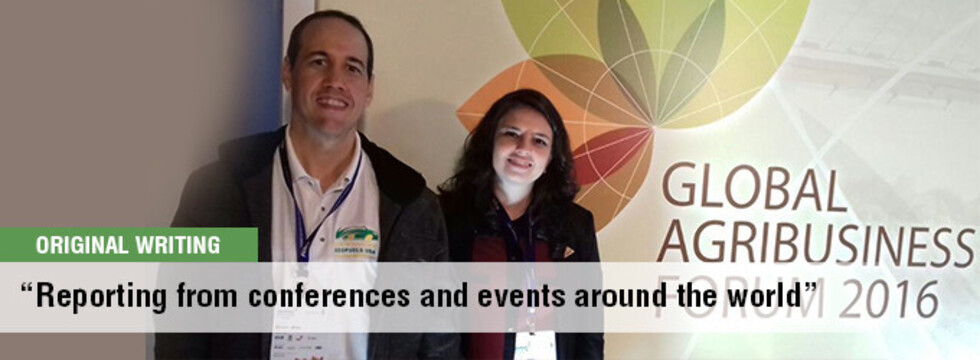


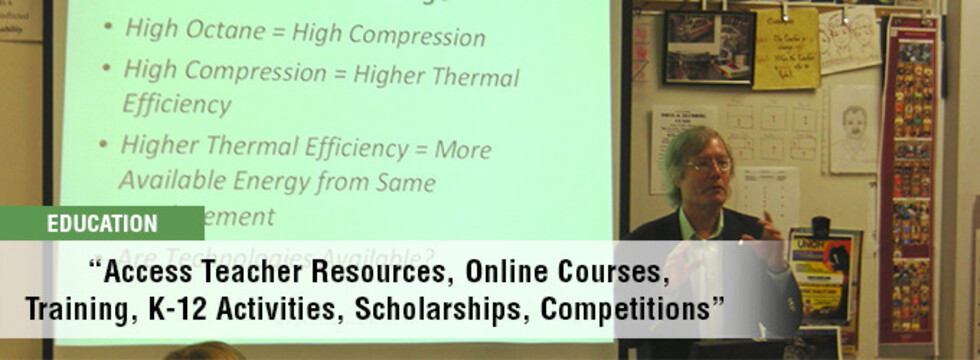







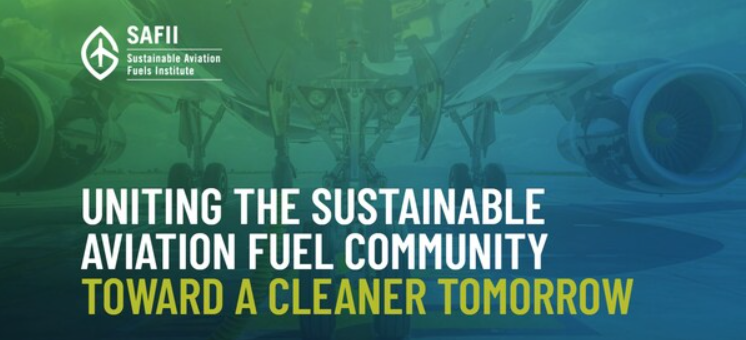








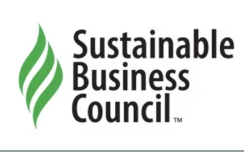





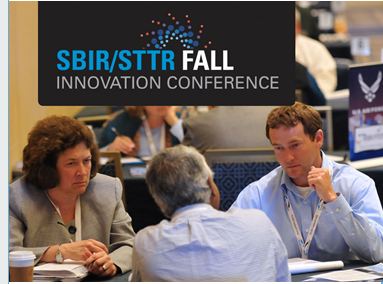





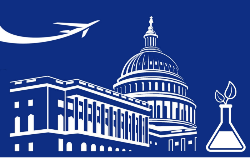

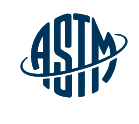

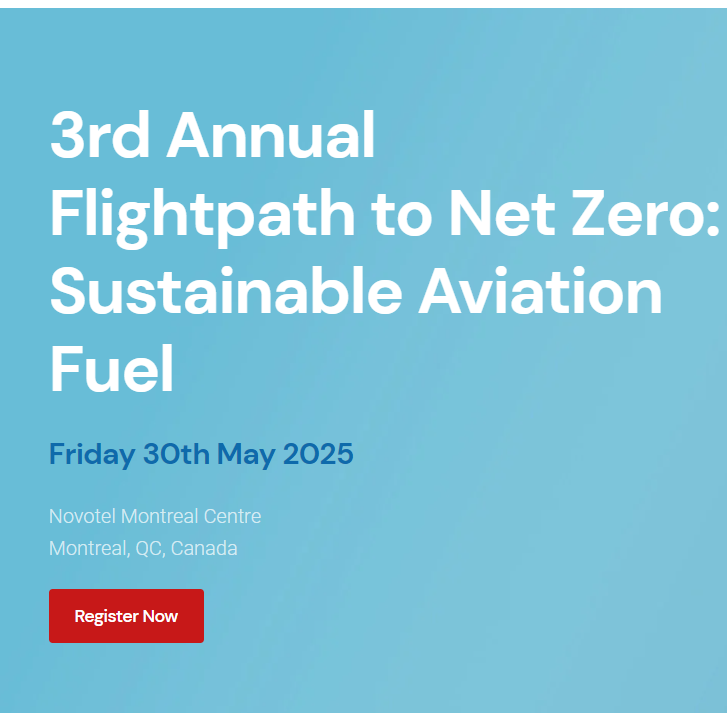














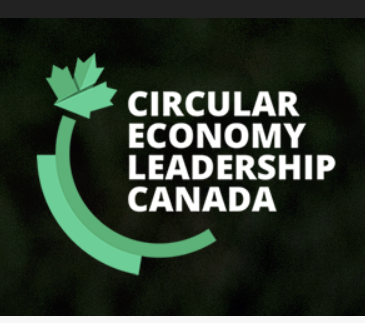
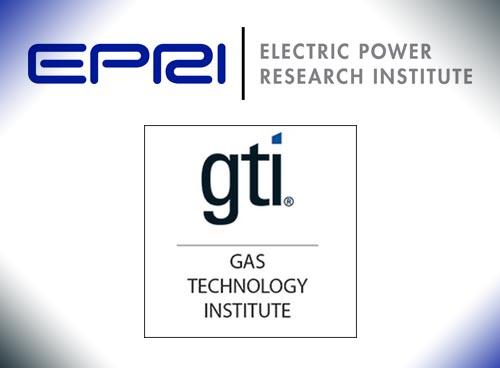

.jpg)




